First Home Starter Pack: Home Improvement Projects
Are you a new home owner? First of all, congratulations!
Now is the time where you need to think about the most important action you need to take in order to increase your new home safety, improve your quality of life, and maximize the value of your real estate.
Before Moving In
Tool kit
If you have absolutely zero tools, buy yourself a good tool kit. Price doesn’t always mean quality, however don’t cheap out here. It is frustrating to have low-quality stuff fail on your hands.
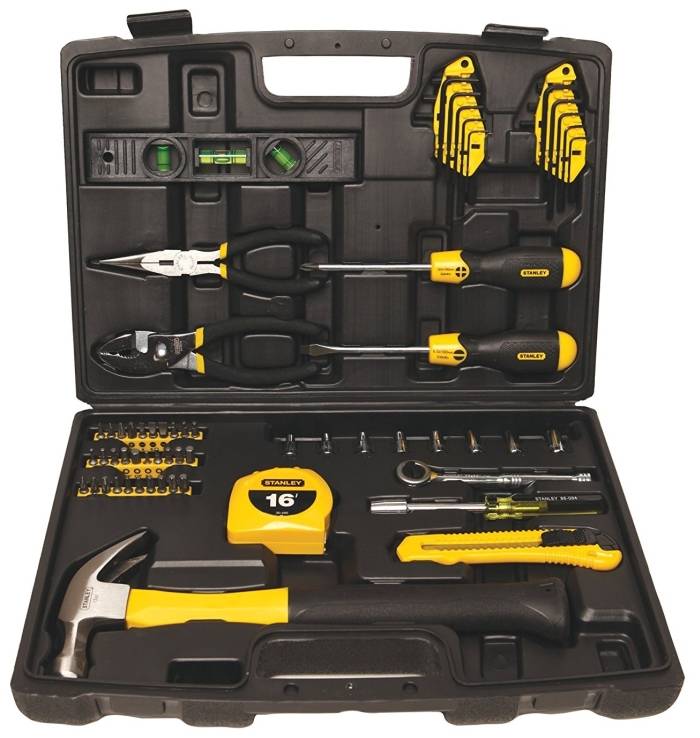
Save yourself the money of buying the same tool two or even three times, and the waste of time to leave your house in the middle of something to go to the hardware store and buy a new wrench, plier, or screwdriver.
Stanley has a 65-piece tool kit (code 94-248) made especially for new homeowners that has a good tool assortment, a great price, and lifetime warranty on the tools.
Change your locks
Change your locks and make new spare keys. Think for a second on how many possible people might have spare keys for your current locks: ex-boyfriends, ex-girlfriends, ex-roommates, friends, relatives, neighbors. It goes without saying that this is a low investment that will give you plenty of peace in your new home.
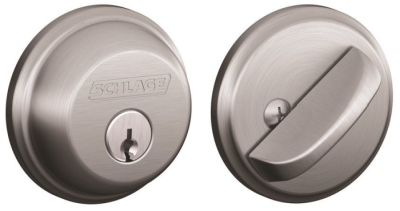
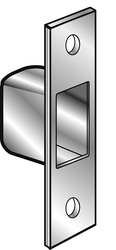
The best lock for the money is the Schlage B60N626 because they offer Level 1 Security (the highest there is), easy installation even for those not inclined to DIY, smooth operation for both key and back, and all you need to install it is a Philips head screwdriver because all the necessary hardware is already inside the box.
You should also consider a cheap upgrade and get the Battalion strike plate. For this money, it is the best upgrade you can make for this money and effectively increase your home safety.
Toilet plunger
Buy a toilet plunger. This is an essential item that is often overlooked until the dreaded day comes and it is not there you need it.

The Mr. Clean 440436 Turbo Plunger and Bowl Brush Caddy Set is a great value for the money with a small footprint in your bathroom floor. No need to worry about where to store the plunger and the brush because there is a caddy; it also has a non-slip base. The parts are made of quality plastic, so there is no metal to rust and stain your bathroom surfaces.
One Amazon reviewer bought this in 2012 and it still works for him, the colors did not fade, the rubber parts did not crack and are still as good as new. Another reviewer said her brush was soft enough not to scratch the bowl and hard enough to clean it well. Here is the Amazon link.
Pre-move home prep
Prep your home. It is much easier and simpler to paint the house before getting all your furniture in. You will have more space to work and less concern about damaging your belongings. Sometimes it is not possible because you are in a hurry or concerned about paying rent in two different places, but ideally, give yourself some overlap between moving from the old home to the new one. It is money well spent.
Electric box
Labeling – label all breakers in your electrical box; all incoming and outgoing pipes and shut-off valves. Know where everything is located.
House systems
In addition to the above, get familiar with all systems – gas, electric, plumbing, water softener system, solar power, garden sprinklers, pool cleaning system, automated garage door etc.
Call before you dig!
Dial 811 – call before you dig to know what is below. Locate all your utilities before landscaping and avoid cutting fiber optics, water mains, natural gas pipes, traffic lights, power lines, cable TV, defense communication lines, and even oil and natural gas pipelines.
Check aircon unit entrances
This is a simple fix – clean the path to all air conditioning unit entrances. Your appliances will work more efficiently, use less electricity, and last longer.
Check vents inside the home too
Likewise, make sure all vents in all rooms are clear of dust and obstructions.
Check your home systems
Do service checks on all home systems – HVAC, hot water heater, fireplace and chimney, all major appliances. This way you might be able to do preventative maintenance and know beforehand when it is time to change something.
One DIY at a time
If you are taking this route, focus on one DIY project at a time. Changing homes is already a lot to take on – new routines, new places to store things, unpacking, and so on. This way you can devote energy to one single thing, such as update your kitchen on a budget, get it done, and then move on to the next project, like installing a glass-block shower wall.
Stud sensor
Get a stud sensor and drill with care. An even better tip: drill only 1-1/4 inch so you don’t reach wires and pipes inside your wall. Take a look, and then keep on going if necessary.
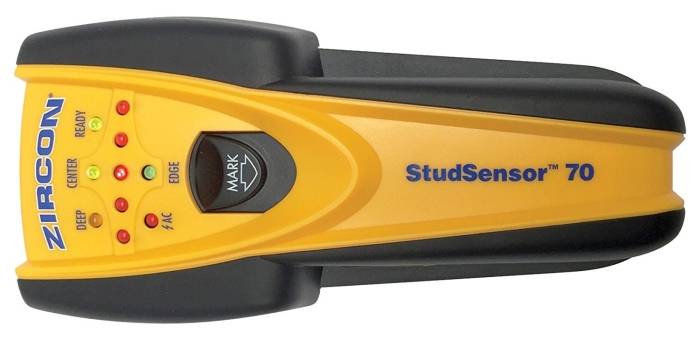
The Zircon StudSensor 70 Stud Finder finds edges and center of studs and joists behind walls, floors, and ceilings. It also detects hidden dangers such as live AC wires up to 2 inches deep. There is also a function to mark (and erase) wires and studs by simply pushing a button. You can buy it here for a great price.
Check the furnace filter
The furnace filter is a great insight on how well the previous owner took care of the house. Its main function is to keep the dirt and the dust out of your vent system. Listen and observe the system operating with and without the filter. If there is a significant difference in air flow, then it is time to change filters. Dirty filters force your furnace to work harder, which can be a costly replacement.
Check tax benefits for home improvements
Find out about your state’s tax benefits to energy-based improvements to houses.
Some states and utility companies provide home energy audits to find energy waste. You can then get tax benefits for improvements such as solar panels (aka photovoltaics), for generating electricity and using it at home, solar-powered water heaters for at least half your home’s water heating, wind turbines for residential use, and geothermal heat pumps certified by Energy Star guidelines.
Attic insulation
Check the insulation in the attic – and install more if needed. This can be very effective in lowering your electricity bills on both Winter and Summer.
Water heater
Lower the temperature of the hot water heater to save on your bills, but never under 140 °F (60 °C). Any lower than that and you will be raising Legionella bacteria in your hot water system.
Install ceiling fans
Install ceiling fans to save money by reducing your energy bill costs. During the Summer, fans can give the sensation of 6 °F (3 °C) cooler, so you can set your thermostat 6 °F higher. Run your fans counterclockwise (air column down) during the Summer to distribute the cool air around the room, and clockwise (air column up) during the Winter to distribute the hot air around the room from the ceiling and down the walls, recirculating hot air and saving energy during the Winter as well.
Make sure to get Energy Star-rated ceiling fans because their efficiency can be up to 50% higher. Choose from 749 different brands, models, styles, and colors by clicking on this Amazon personalized search.
Keep them clean, too, since the dust gathered in the blades slows them down and reduces their effectiveness. (This last tip comes to you courtesy of my father, doctor in aerodynamics, and proven in practice by myself.)
Water pipe insulation I
Insulate exposed water pipes and prevent them from freezing.
Water pipe insulation II
Also, insulate your hot water pipes and save you money by not wasting heat.

This M-D pipe insulation kit comes in a pack of 4 and works both for hot and cold pipes. The tube inner diameter is 5/8 in (17 mm) and each tube has a slit already partly cut in it, which makes installation a breeze. Should you have any leftover insulation, you can always find kids willing to have a sword fight. Amazon sells it here.
DO NOT use water heater blankets
I strongly advise AGAINST using water heater blankets. They are unsafe and they could actually increase energy use. If the engineers already studied, designed, and came up with a solution intelligent enough to stand on its own, why would I install something extra around my water heater? In some cases this could even void your warranty. So it is a TERRIBLE idea. Good example of what not to do.
Get a smart thermostat
Get a Nest Learning Thermostat and learn to use it properly. Within one week, this device already learns your daily routine and your preferred temperatures.
It is the first Energy Star-rated thermostat. It works with Google Home and Amazon Alexa, so you can give voice commands to increase or lower the temperature. You can also connect it to your Wi-Fi network and command it from your mobile phone. Most people install the Nest in less than 30 minutes. You can get it in copper, stainless steel, and white versions.
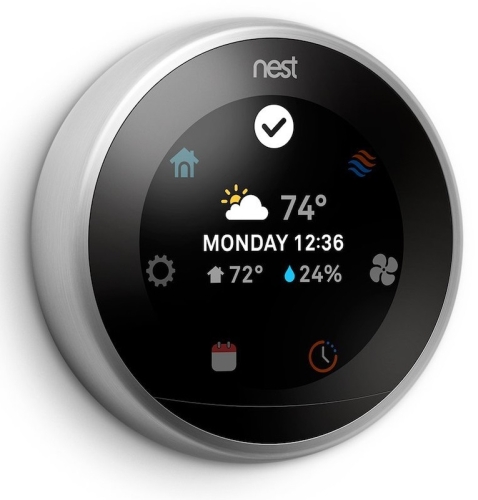
Independent studies have shown the Nest Learning Thermostat can lower your heating bills an average of 11-12%, and your cooling costs by 15%, or $131 to $145 of savings per year. In other words, it pays for itself in less than two years! Find out more in Amazon’s product page and consumer reviews.
Monitor wall and floor cracks
Mark any cracks in the basement with dated masking tape. Monitor them once a month to see if they stay the same or not.
Clothes drying rack
Get yourself a clothes drying rack in the laundry room. Personally, I use those wire hangers to hang most of my clothing. It saves space and all my clothing dries with less wrinkles. This way I can avoid ironing some of them – old t-shirts, for example. Ironing shirts and pants is much faster, too.
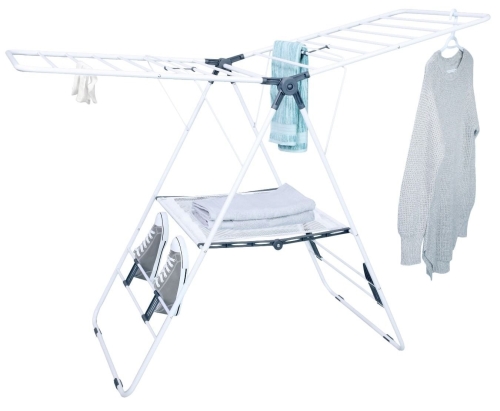
This laundry clothes hanger by Tidy Living has enough space to hang a medium load of laundry. It folds flat, out of your way, when you are not using it. It is easy to maneuver it because it only weighs 8 pounds, less than a couple bottles of Coke. I like the fact that you can also hang shoes in the bottom. Store it indoors and it will last you until the end of times - the construction is robust and the price is a bargain. What are you waiting for?
Fix water leaks
Search for leaks or constant running in all toilets, under-sink plumbing, and faucets. And, naturally, repair leaky ductwork.
Get better light bulbs
Install LED light bulbs. LED saves money by providing the same amount of light at a fraction of the energy consumed by incandescent lamps.
This AmazonBasics LED light bulb simulates daylight (the color temperature is 5,000 Kelvin) and lights up immediately – perfect for your kitchen, bathroom, study, or basement. This bulb’s life is 15,000 hours, or more than 13 years of 3 hours of use per day. It provides 1,400 lumens of light, the equivalent to a 100 Watt incandescent lamp, but it consumes only 14 Watts of energy. In other words, you can save $141.90 per year by changing one lamp at your home (based on average use of 3 hours/day and 11 ¢/kWh). Start saving hundreds of dollars immediately, every year, by ordering this 6-pack of bulbs now.
Get better appliances
On the same note, choose energy efficient appliances. Consumer products carrying the Energy Star seal have a reduced electricity consumption between 21 and 32%.
Surge protection
Consider surge protection on the appliances and home electronics you already have by getting a Smart Strip
The Smart Strip has 3 different types of outlets: Always On, Control, and Automatically Switched outlets. The way it works is simple, and genius: you plug your main device on the Control outlet and all peripherals on the Auto Switch ones. When you turn on and off the main device, the peripherals come on and off as well - without the need to touch the Smart Strip. Imagine these possible scenarios:
| ROOM | CONTROL OUTLET (blue) |
SWITCHED OUTLETS (green) |
ALWAYS ON (red) |
|---|---|---|---|
| Home Office | Computer | Monitors, printer, desk lamp, speakers | Broadband router, landline phone/fax |
| Living Room | Television | DVR, cable TV receiver, surround sound system, game console | |
| Study, Hobby/Crafts Room | Fluorescent lamp | Fan or small heater, Dremel tool, home stereo | |
| Home Shop | Shop lights | Portable table saw or hybrid table saw, router, miter saw, band saw | Air filter, battery charger |

In other words, you turn off your computer and your monitors and speakers no longer consume electricity. Turn on your TV and your surround sound system will also start working immediately. Turn off your shop lights and all your power tools will be off as well, however you can leave your air filter system working on a timer and leave your cordless tool batteries charging as you normally would. See how it is simple and it can work in a variety of cases?
Savings naturally depend on what you are turning off, but one Amazon reviewer said his Smart Strip would pay for itself in seven months just by considering his computer speakers at his home office. Click here to protect your electronics and start saving money now.
Air-seal your (older) home – your home will be much more energy-efficient in Summer and Winter if you seal your attic hatch, doorways, windows, electric outlets and boxes, plumbing pipes.
Install smoke alarms – Half of all fire deaths in the US happen in homes without smoke alarms. You can also reduce your home insurance costs. Pay close attention to proper installation and remember these systems also need maintenance.
Install low-flow shower heads and faucet aerators. Save money on your utility bills! Using less water also means using less hot water, which can translate in longer showers for less money as well. Installing is simple and usually there is no need for any tools.
Get a copy of the Declaration of Covenants, Conditions, and Restrictions (CC&Rs) from your home owners association.
Don’t overspend on furniture and remodeling.
Fix all leaky and/or drafty windows.
After Moving In
Consider a landscape design plan. It will provide you an optimal road map for backyard improvements as your time and money allow.
Regardless of hiring or not a landscape designer, consider planting shade trees near the house – deciduous trees lose leaves in the fall on East and West such as Northern red oak (Quercus rubra), Freeman maple (Acer x freemanii), and Eastern white pine (Pinus strobus); also, evergreens such as American holly (Ilex opaca) on North and Northwest to create shield against cold winter winds; make sure distance is safe between trees and house/power lines.
Get help with your tax return to maximize your refund. Pay to a specialist who is experienced in the subject. You could be leaving money on the table.
Develop a home maintenance checklist and run the list for the first time.
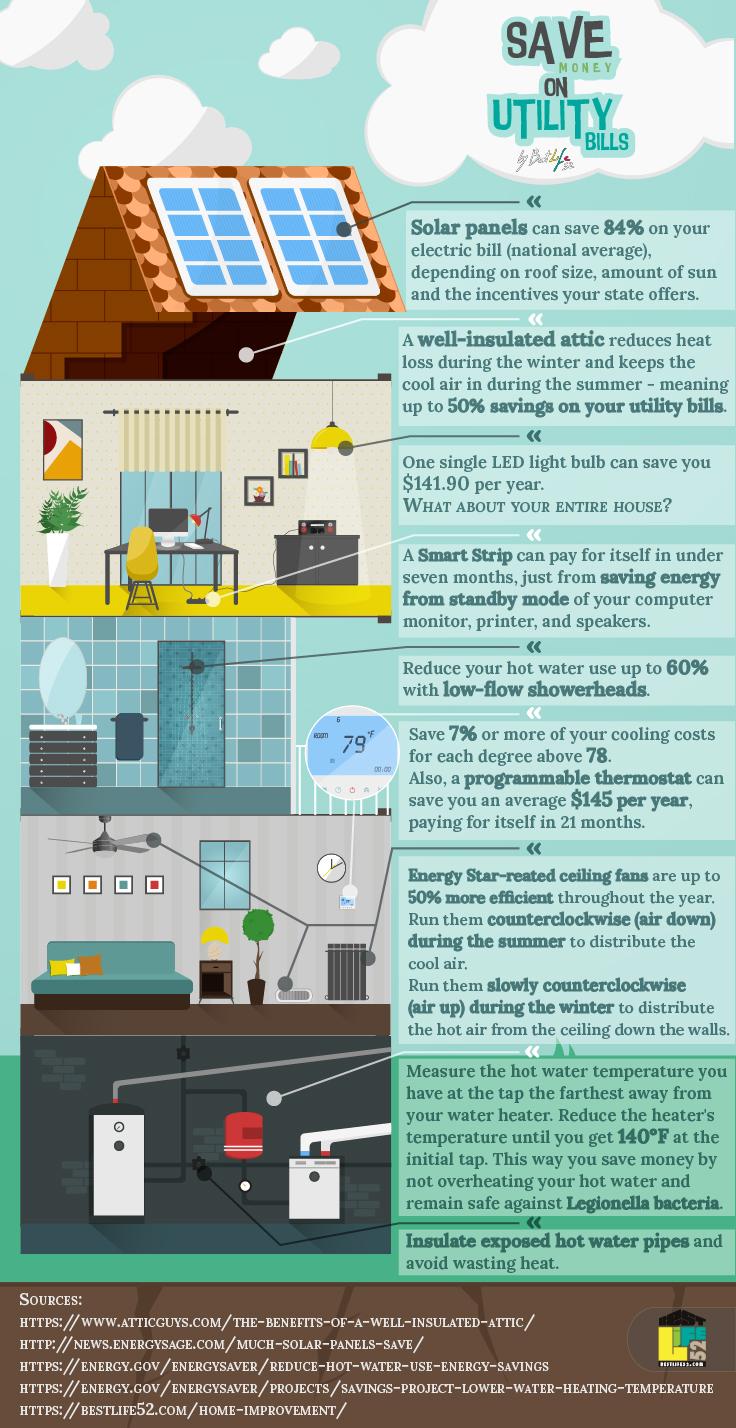
If you liked the infographic above, pin it!
Are you a new home owner? First of all, congratulations!
Now is the time where you need to think about the most important action you need to take in order to increase your new home safety, improve your quality of life, and maximize the value of your real estate.
Before Moving In
Tool kit
If you have absolutely zero tools, buy yourself a good tool kit. Price doesn’t always mean quality, however don’t cheap out here. It is frustrating to have low-quality stuff fail on your hands.

Save yourself the money of buying the same tool two or even three times, and the waste of time to leave your house in the middle of something to go to the hardware store and buy a new wrench, plier, or screwdriver.
Stanley has a 65-piece tool kit (code 94-248) made especially for new homeowners that has a good tool assortment, a great price, and lifetime warranty on the tools.
Change your locks
Change your locks and make new spare keys. Think for a second on how many possible people might have spare keys for your current locks: ex-boyfriends, ex-girlfriends, ex-roommates, friends, relatives, neighbors. It goes without saying that this is a low investment that will give you plenty of peace in your new home.


The best lock for the money is the Schlage B60N626 because they offer Level 1 Security (the highest there is), easy installation even for those not inclined to DIY, smooth operation for both key and back, and all you need to install it is a Philips head screwdriver because all the necessary hardware is already inside the box.
You should also consider a cheap upgrade and get the Battalion strike plate. For this money, it is the best upgrade you can make for this money and effectively increase your home safety.
Toilet plunger
Buy a toilet plunger. This is an essential item that is often overlooked until the dreaded day comes and it is not there you need it.

The Mr. Clean 440436 Turbo Plunger and Bowl Brush Caddy Set is a great value for the money with a small footprint in your bathroom floor. No need to worry about where to store the plunger and the brush because there is a caddy; it also has a non-slip base. The parts are made of quality plastic, so there is no metal to rust and stain your bathroom surfaces.
One Amazon reviewer bought this in 2012 and it still works for him, the colors did not fade, the rubber parts did not crack and are still as good as new. Another reviewer said her brush was soft enough not to scratch the bowl and hard enough to clean it well. Here is the Amazon link.
Pre-move home prep
Prep your home. It is much easier and simpler to paint the house before getting all your furniture in. You will have more space to work and less concern about damaging your belongings. Sometimes it is not possible because you are in a hurry or concerned about paying rent in two different places, but ideally, give yourself some overlap between moving from the old home to the new one. It is money well spent.
Electric box
Labeling – label all breakers in your electrical box; all incoming and outgoing pipes and shut-off valves. Know where everything is located.
House systems
In addition to the above, get familiar with all systems – gas, electric, plumbing, water softener system, solar power, garden sprinklers, pool cleaning system, automated garage door etc.
Call before you dig!
Dial 811 – call before you dig to know what is below. Locate all your utilities before landscaping and avoid cutting fiber optics, water mains, natural gas pipes, traffic lights, power lines, cable TV, defense communication lines, and even oil and natural gas pipelines.
Check aircon unit entrances
This is a simple fix – clean the path to all air conditioning unit entrances. Your appliances will work more efficiently, use less electricity, and last longer.
Check vents inside the home too
Likewise, make sure all vents in all rooms are clear of dust and obstructions.
Check your home systems
Do service checks on all home systems – HVAC, hot water heater, fireplace and chimney, all major appliances. This way you might be able to do preventative maintenance and know beforehand when it is time to change something.
One DIY at a time
If you are taking this route, focus on one DIY project at a time. Changing homes is already a lot to take on – new routines, new places to store things, unpacking, and so on. This way you can devote energy to one single thing, such as update your kitchen on a budget, get it done, and then move on to the next project, like installing a glass-block shower wall.
Stud sensor
Get a stud sensor and drill with care. An even better tip: drill only 1-1/4 inch so you don’t reach wires and pipes inside your wall. Take a look, and then keep on going if necessary.

The Zircon StudSensor 70 Stud Finder finds edges and center of studs and joists behind walls, floors, and ceilings. It also detects hidden dangers such as live AC wires up to 2 inches deep. There is also a function to mark (and erase) wires and studs by simply pushing a button. You can buy it here for a great price.
Check the furnace filter
The furnace filter is a great insight on how well the previous owner took care of the house. Its main function is to keep the dirt and the dust out of your vent system. Listen and observe the system operating with and without the filter. If there is a significant difference in air flow, then it is time to change filters. Dirty filters force your furnace to work harder, which can be a costly replacement.
Check tax benefits for home improvements
Find out about your state’s tax benefits to energy-based improvements to houses.
Some states and utility companies provide home energy audits to find energy waste. You can then get tax benefits for improvements such as solar panels (aka photovoltaics), for generating electricity and using it at home, solar-powered water heaters for at least half your home’s water heating, wind turbines for residential use, and geothermal heat pumps certified by Energy Star guidelines.
Attic insulation
Check the insulation in the attic – and install more if needed. This can be very effective in lowering your electricity bills on both Winter and Summer.
Water heater
Lower the temperature of the hot water heater to save on your bills, but never under 140 °F (60 °C). Any lower than that and you will be raising Legionella bacteria in your hot water system.
Install ceiling fans
Install ceiling fans to save money by reducing your energy bill costs. During the Summer, fans can give the sensation of 6 °F (3 °C) cooler, so you can set your thermostat 6 °F higher. Run your fans counterclockwise (air column down) during the Summer to distribute the cool air around the room, and clockwise (air column up) during the Winter to distribute the hot air around the room from the ceiling and down the walls, recirculating hot air and saving energy during the Winter as well.
Make sure to get Energy Star-rated ceiling fans because their efficiency can be up to 50% higher. Choose from 749 different brands, models, styles, and colors by clicking on this Amazon personalized search.
Keep them clean, too, since the dust gathered in the blades slows them down and reduces their effectiveness. (This last tip comes to you courtesy of my father, doctor in aerodynamics, and proven in practice by myself.)
Water pipe insulation I
Insulate exposed water pipes and prevent them from freezing.
Water pipe insulation II
Also, insulate your hot water pipes and save you money by not wasting heat.

This M-D pipe insulation kit comes in a pack of 4 and works both for hot and cold pipes. The tube inner diameter is 5/8 in (17 mm) and each tube has a slit already partly cut in it, which makes installation a breeze. Should you have any leftover insulation, you can always find kids willing to have a sword fight. Amazon sells it here.
DO NOT use water heater blankets
I strongly advise AGAINST using water heater blankets. They are unsafe and they could actually increase energy use. If the engineers already studied, designed, and came up with a solution intelligent enough to stand on its own, why would I install something extra around my water heater? In some cases this could even void your warranty. So it is a TERRIBLE idea. Good example of what not to do.
Get a smart thermostat
Get a Nest Learning Thermostat and learn to use it properly. Within one week, this device already learns your daily routine and your preferred temperatures.
It is the first Energy Star-rated thermostat. It works with Google Home and Amazon Alexa, so you can give voice commands to increase or lower the temperature. You can also connect it to your Wi-Fi network and command it from your mobile phone. Most people install the Nest in less than 30 minutes. You can get it in copper, stainless steel, and white versions.

Independent studies have shown the Nest Learning Thermostat can lower your heating bills an average of 11-12%, and your cooling costs by 15%, or $131 to $145 of savings per year. In other words, it pays for itself in less than two years! Find out more in Amazon’s product page and consumer reviews.
Monitor wall and floor cracks
Mark any cracks in the basement with dated masking tape. Monitor them once a month to see if they stay the same or not.
Clothes drying rack
Get yourself a clothes drying rack in the laundry room. Personally, I use those wire hangers to hang most of my clothing. It saves space and all my clothing dries with less wrinkles. This way I can avoid ironing some of them – old t-shirts, for example. Ironing shirts and pants is much faster, too.

This laundry clothes hanger by Tidy Living has enough space to hang a medium load of laundry. It folds flat, out of your way, when you are not using it. It is easy to maneuver it because it only weighs 8 pounds, less than a couple bottles of Coke. I like the fact that you can also hang shoes in the bottom. Store it indoors and it will last you until the end of times - the construction is robust and the price is a bargain. What are you waiting for?
Fix water leaks
Search for leaks or constant running in all toilets, under-sink plumbing, and faucets. And, naturally, repair leaky ductwork.
Get better light bulbs
Install LED light bulbs. LED saves money by providing the same amount of light at a fraction of the energy consumed by incandescent lamps.
This AmazonBasics LED light bulb simulates daylight (the color temperature is 5,000 Kelvin) and lights up immediately – perfect for your kitchen, bathroom, study, or basement. This bulb’s life is 15,000 hours, or more than 13 years of 3 hours of use per day. It provides 1,400 lumens of light, the equivalent to a 100 Watt incandescent lamp, but it consumes only 14 Watts of energy. In other words, you can save $141.90 per year by changing one lamp at your home (based on average use of 3 hours/day and 11 ¢/kWh). Start saving hundreds of dollars immediately, every year, by ordering this 6-pack of bulbs now.
Get better appliances
On the same note, choose energy efficient appliances. Consumer products carrying the Energy Star seal have a reduced electricity consumption between 21 and 32%.
Surge protection
Consider surge protection on the appliances and home electronics you already have by getting a Smart Strip
The Smart Strip has 3 different types of outlets: Always On, Control, and Automatically Switched outlets. The way it works is simple, and genius: you plug your main device on the Control outlet and all peripherals on the Auto Switch ones. When you turn on and off the main device, the peripherals come on and off as well - without the need to touch the Smart Strip. Imagine these possible scenarios:
| ROOM | CONTROL OUTLET (blue) |
SWITCHED OUTLETS (green) |
ALWAYS ON (red) |
|---|---|---|---|
| Home Office | Computer | Monitors, printer, desk lamp, speakers | Broadband router, landline phone/fax |
| Living Room | Television | DVR, cable TV receiver, surround sound system, game console | |
| Study, Hobby/Crafts Room | Fluorescent lamp | Fan or small heater, Dremel tool, home stereo | |
| Home Shop | Shop lights | Portable table saw or hybrid table saw, router, miter saw, band saw | Air filter, battery charger |

In other words, you turn off your computer and your monitors and speakers no longer consume electricity. Turn on your TV and your surround sound system will also start working immediately. Turn off your shop lights and all your power tools will be off as well, however you can leave your air filter system working on a timer and leave your cordless tool batteries charging as you normally would. See how it is simple and it can work in a variety of cases?
Savings naturally depend on what you are turning off, but one Amazon reviewer said his Smart Strip would pay for itself in seven months just by considering his computer speakers at his home office. Click here to protect your electronics and start saving money now.
Air-seal your (older) home – your home will be much more energy-efficient in Summer and Winter if you seal your attic hatch, doorways, windows, electric outlets and boxes, plumbing pipes.
Install smoke alarms – Half of all fire deaths in the US happen in homes without smoke alarms. You can also reduce your home insurance costs. Pay close attention to proper installation and remember these systems also need maintenance.
Install low-flow shower heads and faucet aerators. Save money on your utility bills! Using less water also means using less hot water, which can translate in longer showers for less money as well. Installing is simple and usually there is no need for any tools.
Get a copy of the Declaration of Covenants, Conditions, and Restrictions (CC&Rs) from your home owners association.
Don’t overspend on furniture and remodeling.
Fix all leaky and/or drafty windows.
After Moving In
Consider a landscape design plan. It will provide you an optimal road map for backyard improvements as your time and money allow.
Regardless of hiring or not a landscape designer, consider planting shade trees near the house – deciduous trees lose leaves in the fall on East and West such as Northern red oak (Quercus rubra), Freeman maple (Acer x freemanii), and Eastern white pine (Pinus strobus); also, evergreens such as American holly (Ilex opaca) on North and Northwest to create shield against cold winter winds; make sure distance is safe between trees and house/power lines.
Get help with your tax return to maximize your refund. Pay to a specialist who is experienced in the subject. You could be leaving money on the table.
Develop a home maintenance checklist and run the list for the first time.

If you liked the infographic above, pin it!
